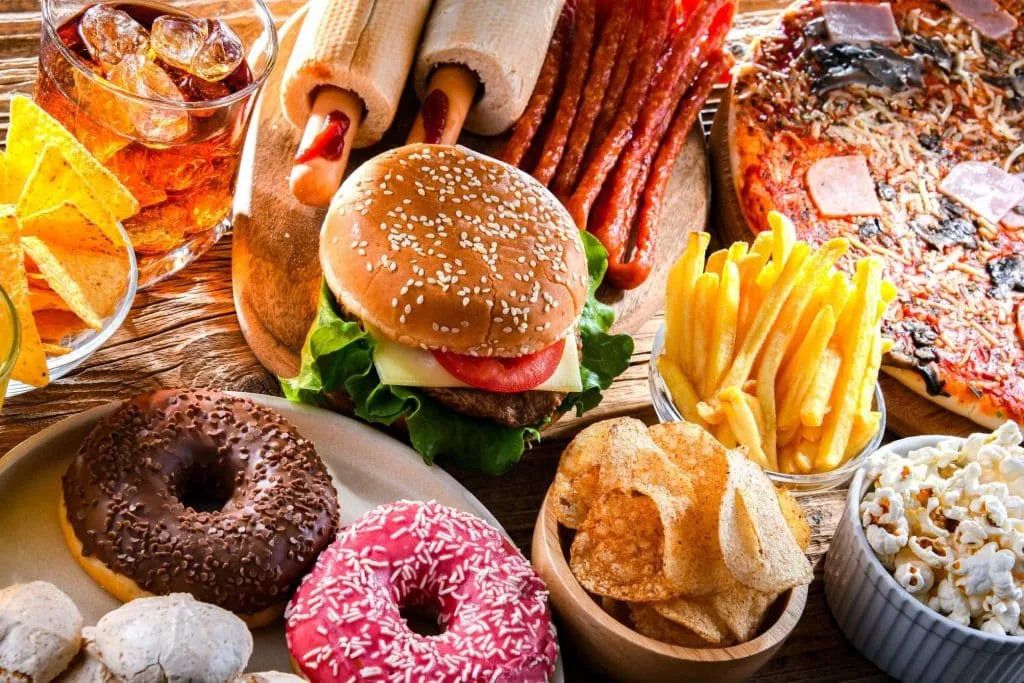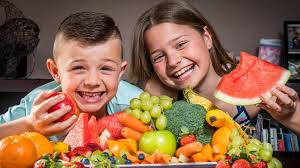
We all love the convenience of a frozen pizza after a rough day at work or a quickly microwaved meal, but these heavily processed foods might be doing a lot more harm to our health than we realize. What even are the differences between a frozen pizza and a homemade one?
Why Do We Crave Industrial Food?
Over half (53%) of the German population is struggling with being overweight. In the US, 2 out of every 3 adults are classified as overweight. Over the past 40 years, obesity rates have more than tripled, not just in the United States, but worldwide, turning it into an international problem. Meanwhile, our plates have been increasingly filled with convenience meals and frozen foods. The link seems obvious.
Factors like lifestyle, genetics, and mental health play an important role in weight gain, of course. But if so many people are continuously gaining weight against their will, something bigger must be at play. Despite countless advancements in dieting, health, and associated studies, no one seems to be able to put a stop to obesity as a scourge upon modern civilization.
The Big Shift
Our food today is fundamentally different from what our grandparents used to eat. Due to competing brands in a capitalist society, our modern foods are made from cheap raw materials like corn, wheat, and soy, which are broken down and chemically altered only to be then reassembled into something that can hardly be described as resembling the original ingredients. It’s like we are all subject to being in a gigantic global experiment and are only now starting to see the consequences. According to a recent study in Germany, more than half of all calories consumed nowadays are from frozen or convenience foods.
Commercials are a huge influence on people’s eating habits. Restaurant meals of steaks, hamburgers, pasta, pizza, french fries, and more are shown piled high on plates with huge servings of unhealthy food. The actors in the commercials are portrayed as immensely enjoying eating the massive hamburgers with cheese, and bacon, encouraging viewers to find the same unbridled joy eating this kind of food. Pizzas are shown dripping with cheese causing viewers to salivate and call their nearest pizza delivery restaurant. The power of commercials to influence what we choose to eat cannot be underestimated.
It’s a hard-to-accept truth that people who consume a lot of highly processed foods are generally more overweight, get sick more often, and end up dying younger. More than 32 different health problems have recently been linked to the consumption of processed foods. Although it shouldn’t be a shocker that obese people consume worse food, the blame should not solely be put on what we eat if what we eat makes us sick in the first place. This is a crucial distinction and is only now slowly getting the attention that it deserves. But what exactly is “highly processed food,” anyway?
Industry Standards

“Highly processed foods” does not just refer to chips and candy bars. Even seemingly healthy food choices may include ingredients like fructose syrup, modified starch, or hydrogenated fats — three of the ingredients found to be causes of health problems. These foods are everywhere — in supermarkets, bakeries, and even (maybe more than one might think) in restaurants. It’s no secret that the choices offered are usually the cheapest available option. Even something as simple as canned beans may contain modified starch, added sugars, and citric acid.
The topic as a whole is a rather controversial one. Some experts think the term “highly processed” is too vague and doesn’t mean anything by itself. And with 8 billion people to feed on the planet, industrialized food production is necessary nowadays. Shouldn’t we focus on eliminating world hunger before we start whining about the ingredients of our canned beans? But this approach has also led to a very competitive market where companies are incentivized to use the cheapest ingredients possible and design foods looking less at health and more at how to make us eat and buy more.
What Can We Do About This
So where does this leave us? Going vegan and eating organic food are the obvious answers. Cooking a meal from scratch is not only fun but allows us to easily grasp what we put into our stir-fries or homemade pizzas, and it can be surprisingly cheap to feed yourself with fresh ingredients without having to overspend. To see how we can deal with our cravings and try an active approach to be more aware of what we are eating and how it might be affecting our health… we might just realize that we feel better and live healthier lives!
Finding cheap and simple recipes online is way easier than you think! As an example, here is one for making delicious pizza dough:
Vegan Pizza Dough
by Karissa’s Vegan Kitchen
Easy, 6-ingredient pizza dough.
The Dough
- 3/4 cup warm water
- 2 1/4 tsp active dry yeast
- 1 tsp organic sugar
- 1 tsp salt
- 2 tbsp olive oil
- 2 cups all-purpose flour (we recommend whole wheat flour, especially sprouted whole wheat flour)
For Making Pizza
- 1-2 tbsp olive oil to brush on the crust before pre-bake
- 1-2 tbsp melted vegan butter to brush on the crust after pre-bake
- your favorite pizza toppings
Instructions
The Dough
- Stir together warm water, yeast, and sugar. Let activate for 10 minutes – it should become foamy. If it’s not foamy, then the yeast is may be too old or your water was too hot.
- Stir in oil and salt.
- Mix in 1/2 cup flour at a time.
- Knead (using your hands or a dough hook in a stand mixer) until it forms a cohesive ball. It will still be a little sticky but you should be able to pick it up as one piece. If it’s far too sticky, add 1-2 more tablespoons of flour at a time until it comes together.
- Continue to knead for 5 minutes.
- Place the ball of dough into a large greased bowl. Cover with a towel and let rise in a warm location for 1 hour or until doubled in size. I let my dough rise in the oven with JUST the oven light on.
- Pre-heat oven to 450 degrees Fahrenheit (make sure to remove the dough from the oven if you let it rise in there.)
- Punch the dough down and knead a couple of times until it becomes smooth and more firm. At this point, you can store the dough in the freezer or fridge until later…or make a pizza!
For Making Pizza
- Roll out the dough on a floured surface. Use your pizza pan for size reference (this recipe makes one 12-inch thick-crust pizza.)
- Sprinkle the pizza pan with a pinch or two of flour and transfer the dough onto the pan. Work the dough to fit the edges.
- Brush the dough with 1-2 tbsp of olive oil (this helps the top of the dough stay moist and not overcook.)
- Poke the dough all over with a fork – this will prevent the dough from puffing up.
- Pre-bake the dough for 5-7 minutes or until the bottom is just barely beginning to brown. At this point, the pizza should be able to lift out of the pan with a spatula.
- Remove from the oven, brush the crust with 1-2 tablespoons of melted vegan butter, and add your toppings.
- Bake for an additional 10-15 minutes or until the crust is golden brown and the toppings are cooked through.
Notes
This recipe makes one thick crust 12-inch pizza. For a thinner crust, use a larger pizza pan (like a 16-inch). Or, split the dough in half before rolling out to make two 12-inch pizzas. A 12-inch pizza cut into 8 slices will serve 2-4 people, depending on appetite!
I have not tested this pizza dough recipe with other types of flour.
When you read the ingredients in store bought processed foods it should be obvious why we should all make an effort to avoid them if possible. Thanks for sticking with me through this deep dive and remember that your body is the most precious thing you own!



